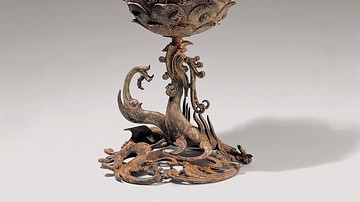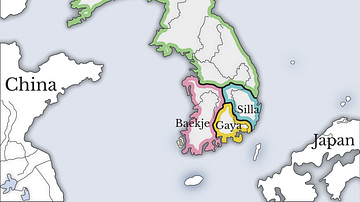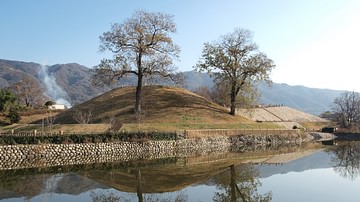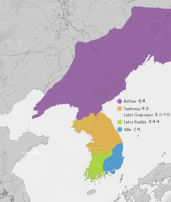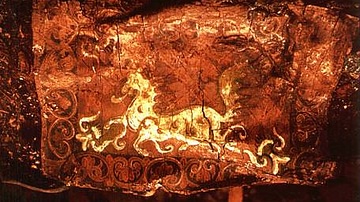The tomb of king Muryeong is perhaps one of the most impressive tombs from the Baekje kingdom of ancient Korea, both in its design and the treasure found inside it. Muryeong-Wang (also Munyeong or Muryong) reigned from 501 to 523 CE. Baekje (aka Paekche) was one of the Three Kingdoms which ruled over ancient Korea from the 1st century BCE to the 7th century CE. Traditionally founded in 18 BCE, Baekje controlled territory in the south-western part of the peninsula and was in constant rivalry with the other two kingdoms of the period: Silla and Goguryeo. Muryeong's reign, however, benefitted from an alliance between Baekje and the Silla kingdom which had been formed in 433 CE and would last over a century until 553 CE. During this relatively stable century, Baekje enjoyed its greatest period of prosperity. The king's tomb is a lasting example of the wealth of Baekje at this time and its design and contents illustrate close cultural ties with both China and Japan.
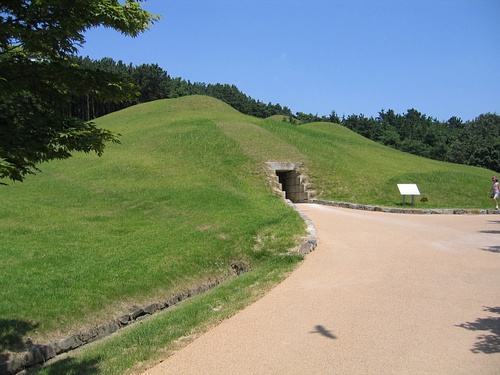
Muryeong was the 25th king of Baekje, and he managed to increase the central control of his government over his kingdom and conquer the state of Tamna based on Jeju Island and parts of the Gaya (Kaya) kingdom. Another element of foreign policy was to foster closer ties with the Liang dynasty of southern China. Having reigned for 22 years, Muryeong died in May 523 CE. His tomb befits such a successful monarch and is located near the Baekje capital of Ungjin (modern Gongju/Kongju). Ungjin had replaced Hansong (modern Kwangju) as the capital in 475 BCE but was itself later replaced by the more favourably positioned Sabi (modern Buyeo/Puyo) in 538 CE.
The tomb was constructed in 525 CE, as indicated by a stone inscription plaque within the tomb. The inscription is written in haeso (cursive style) calligraphy and also mentions that in order to use the land for the tomb a 'contract' was made with the local earth spirits, which was also a custom in ancient China. To 'pay' for the land Chinese coins of the Liang dynasty were left on top of the plaque. The queen joined her husband upon her death in 529 CE, and her epitaph is inscribed on the reverse side of the inscription plaque.
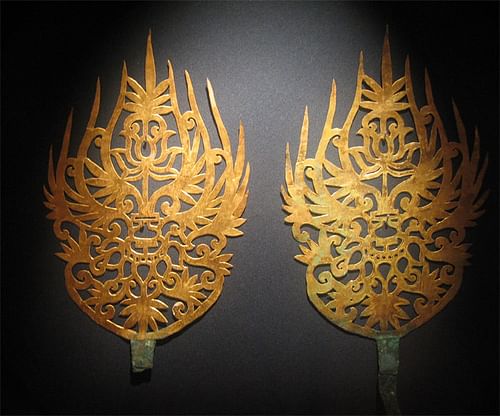
The tomb was discovered unlooted in 1971 CE and forms a huge earth mound with a horizontal entrance facing south. The burial chamber within the mound is rectangular, and through the arched entrance passage, it opens to a semi-circular vault lined with hundreds of moulded bricks, many decorated with Buddhist lotus flower motifs and geometric designs. A similar type of tomb design is seen in Liang China. The walls have large niches constructed in the form of flames and each contained a lamp made from a celadon (greenware) bowl of Chinese origin. The king and queen were placed inside lacquered coffins with the body resting on a lacquered head and footrest.
The artefacts found within the tomb include gilt-bronze crowns which have a form which probably imitates trees, an important motif in Shamanistic art. Separate large flat floral ornaments rendered in gold and discovered in the tomb support ancient text descriptions (as, for example, in the 10th-century CE Jiu Tang shu or 'Book of Old Tang') of Baekje kings and queens wearing such embellishments fixed into the band of their gold crowns. These additions have a flame-like appearance which echo the tomb's wall niches and are reminiscent of those mandalas sometimes found on Buddhist figure sculptures.
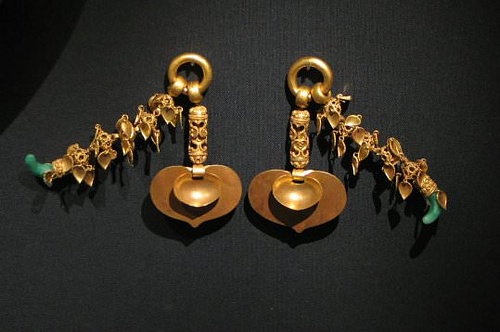
Besides crowns, the tomb contained decorated earrings and bracelets made of gold and two bracelets of silver decorated with dragons and inscribed with their weight and the name of the Baekje silversmith Dari, whose name also appears on the Sakyamuni triad (Buddha and two attendants) from the Horyuji temple in Ikaruga, Japan. Other items include a gold hairpin in the form of a bird in flight, a bronze wine cup with a silver lid which has dragon and lotus petals decoration, jade pendants, a glass figurine of a boy, spiked shoes, bronze handheld mirrors, and an iron sword with ornate handle. The crowns and jewellery pieces are all of local manufacture but do show similarities with precious goods in southern Japanese tombs and perhaps illustrate the close relationship between Baekje and Wa (Wae) Japan. Eight items from the tomb, including the gold crowns, feature on the official list of National Treasures of Korea.
This content was made possible with generous support from the British Korean Society.
